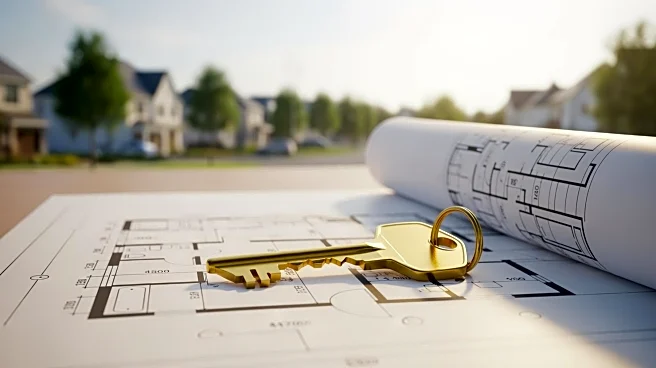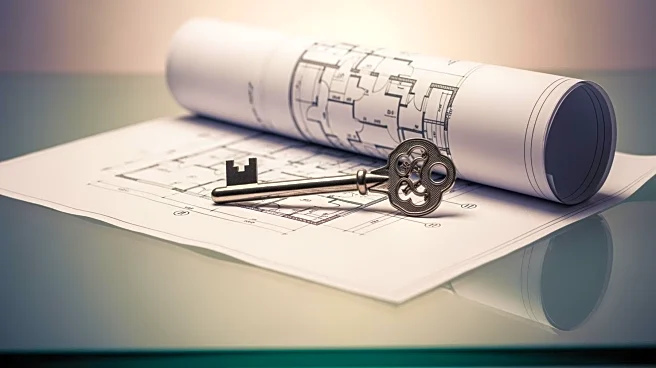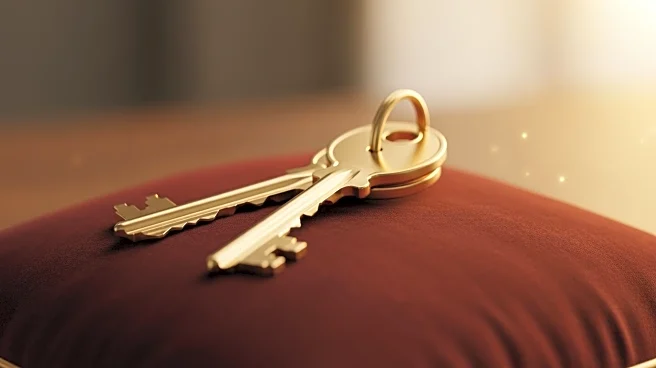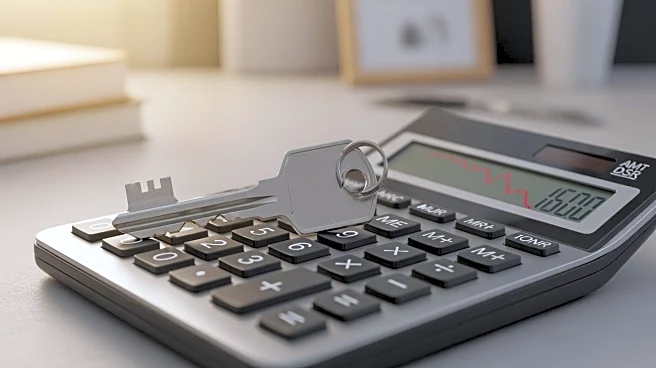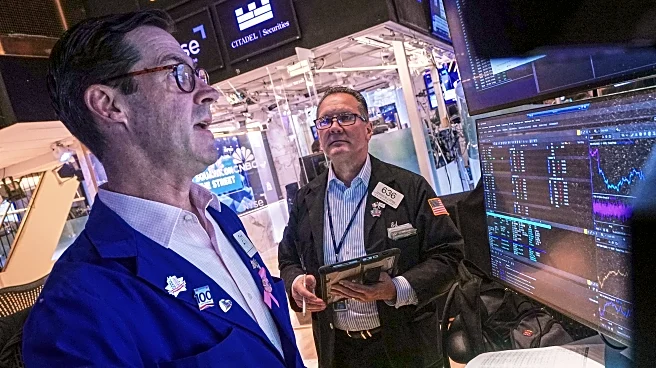What's Happening?
The National Association of Home Builders/Wells Fargo Housing Market index has risen to 37 in October, marking a six-month high. This increase is attributed to hopes that declining mortgage rates will
boost housing demand and alleviate the inventory surplus affecting new housing construction. Despite the improvement, the index remains below the 50 breakeven point for the 18th consecutive month. Builders are reducing house prices to attract buyers, with 38% reporting price cuts averaging 6%. The survey indicates a rise in current sales conditions and future sales expectations, although prospective buyer traffic remains low.
Why It's Important?
The rise in homebuilder sentiment suggests potential recovery in the housing market, which has been challenged by high mortgage rates and economic uncertainty. Easing mortgage rates could improve affordability and stimulate demand, benefiting builders and related industries. However, the persistent inventory overhang and cautious buyer behavior indicate ongoing challenges. The housing market's performance is crucial for economic stability, influencing consumer spending and construction activity.
What's Next?
Builders may continue to adjust pricing strategies and offer incentives to attract buyers. The Federal Reserve's interest rate policies will play a significant role in shaping mortgage rates and housing demand. Economic indicators, such as labor market conditions, will also impact buyer confidence and market dynamics. Stakeholders, including policymakers and industry leaders, will monitor these developments closely to assess the housing market's trajectory.
Beyond the Headlines
The housing market's recovery could have broader implications for urban development and infrastructure planning. As demand shifts, there may be increased focus on sustainable building practices and affordable housing solutions. The interplay between interest rates, economic conditions, and housing demand will remain a critical area of analysis for economists and policymakers.
